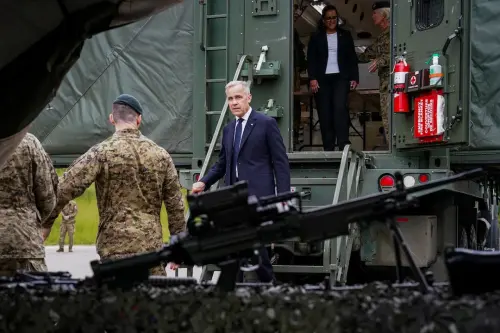Introduction
Canada has committed to increasing its military funding to meet NATO's target of spending *2%* of its GDP on defense, achieving this goal five years ahead of schedule.Context
Under pressure from NATO allies, Prime Minister Mark Carney announced on June 9 that the government would allocate an additional C$9 billion (*$6.58 billion*) this fiscal year to bolster military capabilities. Currently, Canada spends approximately *1.4%* of its GDP on defense, which has drawn criticism from the United States and other NATO members.Developments
Carney emphasized the necessity to enhance military spending to replace outdated equipment and reduce Canada's dependency on U.S. defense. He stated, "Now is the time to act with urgency, force, and determination," and reaffirmed intentions to collaborate more closely with Europe's defense sector.U.S. Ambassador to Canada, Pete Hoekstra, welcomed the new commitment, highlighting that it strengthens the alliance and contributes to global safety. The Canadian government plans to increase recruitment, repair military equipment, and establish new defense partnerships with the additional funds.
While Carney acknowledged the rising budget deficits, he argued for a balanced approach, cutting other expenditures without implementing tax cuts. He noted that Canada's defense spending could increase to *3.5%* of GDP by *2030*, although such a move may further escalate the deficit.
In response to shifting global dynamics, Carney pointed out the necessity for Canada to adapt, as the United States begins to withdraw from the concept of collective security. He stressed that middle powers must actively engage in global discussions to maintain their interests.
Furthermore, Canada will enhance service members' salaries and procure new submarines, aircraft, ships, armored vehicles, and various technological advancements, including radar, drones, and sensors.
